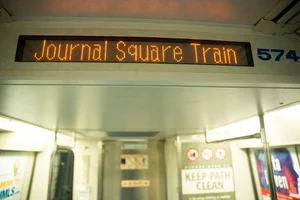Why Home Staging Matters: How to Sell Your Home Faster and for More in 2025
The Modern Buyer’s Mindset
Scroll through Instagram or Zillow, and you’ll see it: every home looks like it belongs in a magazine. Between HGTV, Pinterest, and TikTok home tours, buyers aren’t just shopping for a house anymore, they’re chasing a feeling.
According to the National Association of REALTORS® (NAR), 48% of agents say buyers expect homes to look like the ones they see on TV, and 58% say buyers are often disappointed when they don’t. In a market as fast-paced and competitive as Hoboken and Jersey City, first impressions aren’t optional — they’re everything.
What We’ll Cover
The Psychology Behind Staging
The ROI of Staging: What Sellers Need to Know
What to Stage (and What to Skip)
Beyond the Big Three: Quick Wins That Matter
Digital Staging: The Online Edge
Should You Consider Virtual Staging?
How to Find a Trusted Home Staging Expert
Questions to Ask a Potential Staging Expert
Local Expert Advantage: How The Jill Biggs Group Helps
Frequently Asked Questions
The Psychology Behind Staging
Home buying isn’t just a financial decision — it’s an emotional one. Buyers don’t fall in love with square footage; they fall in love with how a home makes them feel.
Staging transforms an empty or cluttered space into a vision of possibility. It helps buyers imagine family dinners in the kitchen, lazy Sunday mornings in the bedroom, or entertaining friends in the living room.
As NAR notes, 83% of agents say staging helps buyers “visualize the property as a future home.” That emotional connection is what turns interest into an offer.
“When a home looks move-in-ready, buyers don’t just like it, they fight for it,” says Phoebe Biggs, a Jill Biggs Group listing specialist.
Jersey City, NJ brownstone staged by the Jill Biggs Group
The ROI of Staging: What Sellers Need to Know
Let’s talk numbers — because staging isn’t an expense when selling; it’s an investment that pays you back, often faster than you think.
According to the Real Estate Staging Association (RESA) Q3 2025 Market Insights, homes that were staged didn’t just sell quicker, they sold for more.
Average investment in staging is $3851
Average return on investment: 3,551%, or roughly $35 earned for every $1 spent.
Homes with professional staging spent an average of 19 days on the market — compared to weeks or even months for unstaged properties.
Strong over-ask performance from entry through luxury tiers; properties between $750k–$1.49M commonly achieved ~9–10% over list with multi-thousand-percent ROI.
NAR’s 2025 report echoes these results: 17–19% of agents said staging directly increased sale prices by 1%–5%, and 83% said it helps buyers connect emotionally with the home — a key driver behind stronger offers.
In other words, buyers in Hudson County, Hoboken, and Jersey City are often busy professionals with limited time and high expectations. They want turnkey homes, not projects. A staged home communicates care, quality, and move-in readiness — three cues that motivate buyers to pay top dollar.
“Buyers don’t want to imagine what a home could look like — they want to see it,” says Lauren Blumenfeld, Partner at The Jill Biggs Group. “A well-staged property removes hesitation and builds excitement. In this market, that emotional connection is often what drives multiple offers — and higher sale prices.”
What to Stage (and What to Skip)
Good news: you don’t need to stage every inch of your home. Focus your time, energy, and budget where it actually counts.
According to NAR’s 2025 Profile of Home Staging, buyers rank the following spaces as the most influential when deciding whether a home feels right:
1. The Living Room — Your First Impression Space (37%)
This is where emotions kick in. The living room sets the tone for the entire showing — it’s the first area buyers imagine relaxing or hosting friends. A well-staged living room creates warmth, flow, and a sense of lifestyle that makes the rest of the home feel inviting.
Pro Tip: Use soft neutrals, fresh greenery, and strategic lighting to make the space feel bright and open.
2. The Primary Bedroom — The Comfort Zone (34%)
After the living room, buyers look for calm and comfort — a retreat from daily life. Staging the primary bedroom to feel spacious and serene helps buyers emotionally connect to the idea of “coming home.”
Pro Tip: Think plush bedding, simple art, and minimal clutter. A clean, cozy bedroom makes the home feel move-in ready.
3. The Kitchen — The Heart of the Home (23%)
Even if buyers plan to remodel later, a clean, staged kitchen makes a powerful impact. It signals care and upkeep — and buyers equate that with value.
Pro Tip: Clear counters, update small details (like hardware or lighting), and add pops of freshness — a bowl of lemons or fresh flowers goes further than you’d think.
Hoboken brownstone staged by The Jill Biggs Group
Beyond the Big Three: Quick Wins That Matter
If time or budget is tight, small improvements can still make a difference. According to NAR, the top prep steps before listing are:
Declutter the entire home (93%)
Deep clean every space (85%)
Remove pets and their accessories during showings (81%)
Staging isn’t about redesigning your home; it’s about revealing its potential. Even relatively inexpensive and quick tweaks can make a world of difference.
Digital Staging: The Online Edge
Because 90% of buyers start online, your home’s digital “curb appeal” can make or break your sale.
NAR reports that 73–88% of agents say professional photos, videos, and virtual tours are essential for attracting buyers. At The Jill Biggs Group, we use professional staging, photography, and videography to make sure your home stands out the moment it hits the feed — whether buyers are scrolling from Hoboken or halfway across the country.
Should You Consider Virtual Staging?
Because If your home is vacant or your timeline is tight, virtual staging can be a smart, budget-friendly alternative to physical staging. It uses digital design software to furnish and decorate listing photos — helping buyers visualize a space without the cost or logistics of moving furniture.
Pros:
Cost-effective: Typically a fraction of the price of traditional staging.
Quick turnaround: Ideal for listings that need to go live fast.
Visually impactful: Helps empty spaces feel warm and inviting in photos.
Flexible: Easy to adjust designs or style to appeal to different buyer demographics.
Cons:
No in-person experience: Virtual furniture doesn’t help during showings.
Limited realism: Poorly executed edits can look fake or misleading.
Transparency required: Always disclose that images are virtually staged.
Watch Outs:
Use a professional service — quality matters more than ever.
Keep designs realistic and in line with the home’s scale and finishes.
Combine virtual staging with strong lighting and photography for best results.
How to Find a Trusted Home Staging Expert
Not all stagers are created equal — the right one understands both design and what sells in your market. When choosing a professional, look for someone who:
Knows the local market: They should understand what appeals to Hudson County and Northern New Jersey buyers — from space-saving design to modern, city-inspired styling.
Has proven results: Ask to see before-and-after photos and examples of homes they’ve staged that sold quickly or above asking.
Offers flexible options: The best stagers can handle both vacant and occupied homes, and provide consultations for smaller refreshes.
Communicate clearly: They should coordinate seamlessly with your real estate agent and be transparent about costs, timelines, and expectations.
Brings practical design sense: Staging isn’t about flashy decor — it’s about making your home feel bright, open, and livable.
Contact Trusted Organizations: These include the Real Estate Staging Association (RESA®) which can give you referrals.
At The Jill Biggs Group, we have dedicated staging managers to help guide you through every step of the way, from planning to executing to dazzling buyers and getting a quick sale.
Questions to Ask a Potential Staging Expert
Before you hire a stager, do a quick chemistry check. Ask:
What’s your experience with homes in my price range or neighborhood?
Do you offer both vacant and occupied staging options?
Can I see before-and-after examples of your work?
What’s the average cost and timeline?
How do you measure results or ROI?
The right staging partner will listen, adapt to your goals, and collaborate closely with your agent to make sure your property looks exceptional online and in person.
Local Expert Advantage: How The Jill Biggs Group Helps
Every home tells a story — staging helps us tell it the right way.
At The Jill Biggs Group, we work with trusted local stagers who understand the Hudson County market inside and out. Whether your Jersey City condo needs a light refresh or your Hoboken brownstone needs a full design plan, we tailor the approach to your property, your goals, and your timeline.
Thinking of selling in Hoboken, Jersey City, or beyond? Let’s talk about how strategic staging, pricing and smart marketing can help your home sell faster and for more.
Contact The Jill Biggs Group today to start your listing journey.
Frequently Asked Questions About Home Staging in 2025
Q: Are home staging costs tax-deductible?
A: Generally, staging costs aren’t tax-deductible for homeowners selling their primary residence. However, if the property is an investment or rental, you may be able to claim staging as a business expense. Always check with your tax professional for advice specific to your situation.
Q: Can home buyers keep staging items?
A: No. Staged furniture and décor are typically owned by the stager or a rental company. Once the home sells, items are removed before closing. However, if a buyer loves the look, some stagers will sell individual pieces separately or replicate the design in the new space.
Q: What is virtual home staging?
A: Virtual staging uses digital design software to furnish and decorate photos of empty rooms. It’s faster and more cost-effective than physical staging, especially for vacant listings. At The Jill Biggs Group, we use both virtual and in-person staging to showcase properties beautifully online and in real life.
Q: Who pays for home staging?
A: It depends on the arrangement. According to RESA, about 70% of homeowners pay for staging, while 26% of agents or teams cover the cost as part of their marketing strategy. At The Jill Biggs Group, we tailor recommendations and budgets to each listing for the best results.










